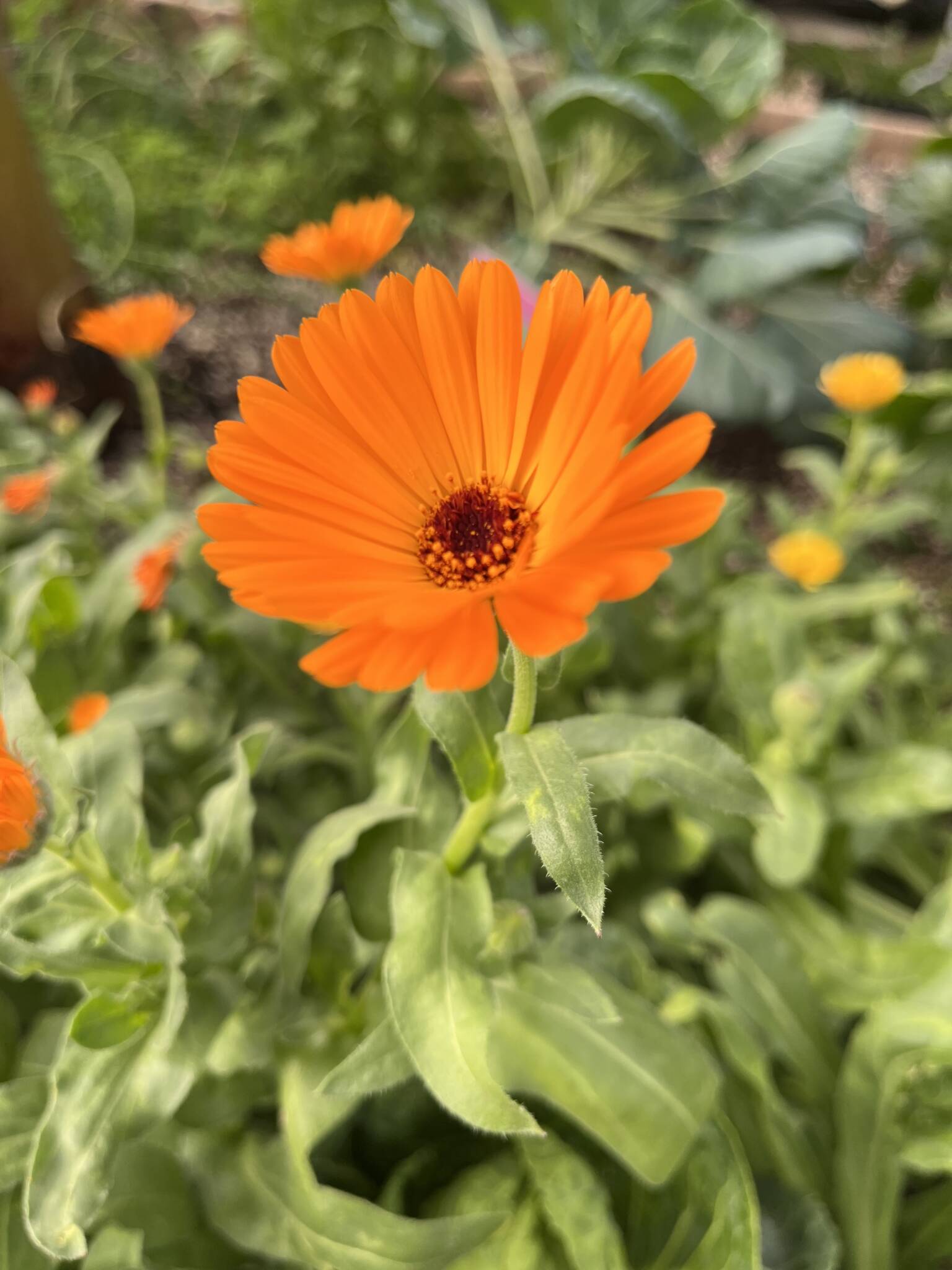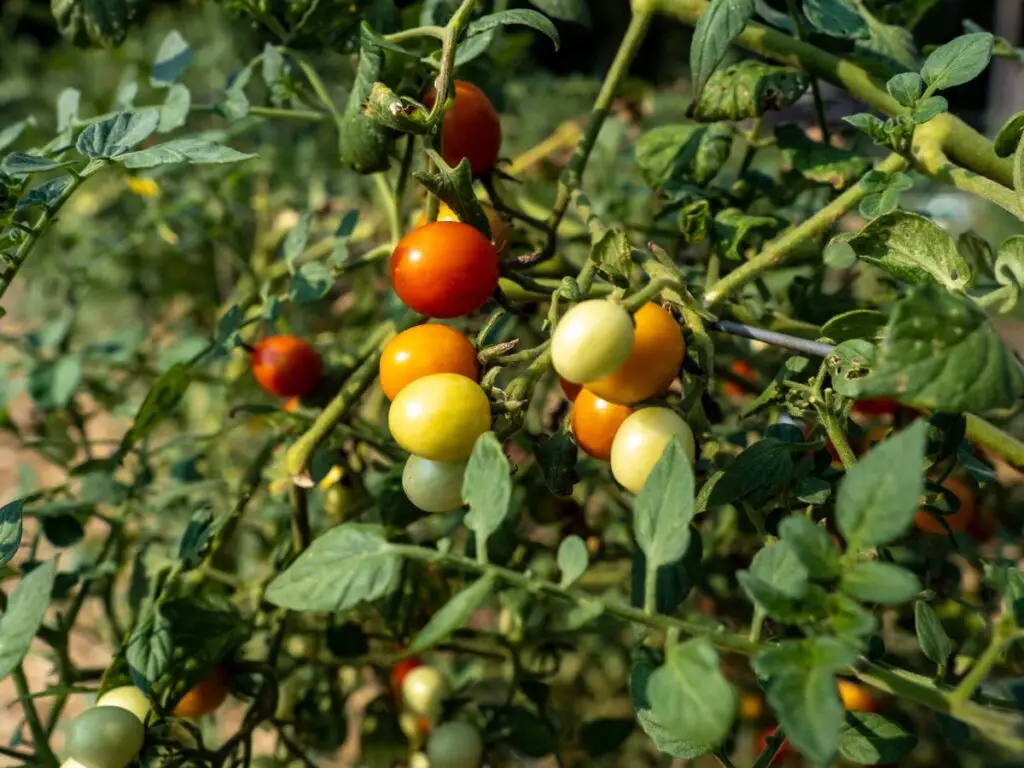An 8-week-old tomato plant should have a height of 8-12 inches and a stem diameter of around a quarter inch. Tomatoes are great additions to any garden, providing fresh produce throughout the summer and fall seasons.
Growing tomatoes can be easy and fun, but it is essential to understand the plant’s growth process to have a successful yield. One important aspect is knowing what to expect from an 8-week-old tomato plant. At this stage, the tomato plant should be around 8-12 inches tall, and its stem should be about a quarter inch in diameter.
Proper care, such as sufficient sunlight, water, and fertilizer, can ensure healthy and productive tomato plants. Keep reading to learn more about growing tomato plants and how to care for them at different stages of growth.

Credit: growingspaces.com
Week 1-2: Preparing Your Garden
Choosing The Right Location
The first step in preparing your garden for a successful tomato plant growth is selecting the right location. Here are a few key points to keep in mind:
- Pick a spot that receives at least 6-8 hours of direct sunlight each day.
- The soil should be well-draining with a ph level between 6.0-7.0.
- Avoid areas with strong winds that can damage the plants.
Soil Conditioning Techniques
Once you’ve found the perfect location, it’s time to prepare the soil for planting. Consider these techniques:
- Clear the area of any weeds or debris.
- Till the soil to a depth of 12 inches to allow for proper root growth.
- Add organic material like compost or aged manure to improve soil structure and nutrient content.
Fertilizer Application
Fertilizer helps provide nutrients to the tomato plant and promote healthy growth. Here’s what you need to keep in mind:
- Apply fertilizer at the recommended rate for your soil type and tomato variety.
- Use a balanced fertilizer with nitrogen, phosphorus, and potassium.
- Follow the instructions carefully, as over-fertilizing can harm the plants.
Successfully preparing your garden for tomato plant growth requires careful attention to location, soil preparation, and fertilizer application. By following these key points, you’ll be on the right track to a bountiful tomato harvest in just a few short weeks.
Week 3-4: Planting Your Tomato Plants
Selecting The Right Tomato Varieties
When selecting the right tomato varieties for your garden, it’s crucial to consider factors such as the climate, disease resistance, and growth habits. Here are some tomato varieties you can consider planting:
- Cherokee purple: This variety is known for its deep purple-red flesh and delectable flavor.
- Early girl: As the name suggests, this tomato variety matures quickly. It’s ideal for those who want to enjoy their tomatoes sooner.
- Roma: This tomato variety is known for its meaty flesh and is perfect for canning and making sauces.
- Beefsteak: These large and flavorful tomatoes are perfect for slicing and adding to sandwiches or burgers.
Preparing The Soil For Planting
The key to successful tomato planting is preparing the soil correctly. Follow these steps to get your soil ready for planting:
- Choose a spot with well-drained soil that gets plenty of sunlight.
- Add compost or well-rotted manure to the soil to improve its texture and fertility.
- Remove any rocks or debris from the soil to prevent the tomato’s roots from being blocked.
Tips For Planting Your Tomato Plants
When planting your tomato plants, here are some tips to keep in mind:
- Dig a hole twice as wide as the root ball of your tomato plant.
- Add some bone meal or a balanced fertilizer to the hole to provide the plant with necessary nutrients.
- Gently loosen the roots of your tomato plant before planting to encourage growth.
- Make sure to water your tomato plant immediately after planting and keep it well-watered throughout the growing season.
With these tips, you’ll be well on your way to growing healthy and delicious tomatoes in your garden.
Week 5-6: Maintenance Tips For Your Tomato Plants
As your tomato plants enter their fifth and sixth weeks of growth, they need some love and attention to ensure their health and productivity. Here are some essential maintenance tips you need to know during this critical stage:
Watering Your Plants Properly
Watering your tomato plants properly is crucial for their growth and fruit production. Here are some things to keep in mind:
- Provide consistent watering: Tomatoes need a consistent supply of moisture, so make sure to water them deeply at least once a week, especially during hot and dry weather.
- Don’t overwater: Overwatering can harm your plants’ roots and lead to diseases. Make sure the soil is moist, but not waterlogged, and avoid getting water on the leaves, as it can promote fungal growth.
- Water at the base: To prevent water from getting on the leaves, water your plants at the base, using a soaker hose or watering can. This way, the water gets directly to the roots where it’s needed.
Pruning And Trellising Your Tomato Plants
Pruning and trellising are essential techniques to keep your tomato plants healthy and encourage a bountiful harvest. Here’s how to do it:
- Remove suckers: Tomato plants often develop “suckers” – new shoots growing between the stem and the branches – that can divert the plant’s energy from fruit production. Remove these suckers while they’re small, using a clean pair of pruning shears.
- Support your plants: As your tomato plants grow taller and heavier, they need support to keep them from sagging, breaking, or touching the ground, which can invite pests and diseases. Use stakes or cages to support them, and tie them gently to the support structure using garden twine.
- Prune lower leaves: To improve air circulation and prevent diseases, prune off the lower leaves of your tomato plants, especially those touching the ground. This also helps the plant to focus its energy on growing and ripening fruit.
Pest And Disease Prevention Techniques
Tomatoes are vulnerable to various pests and diseases that can harm or kill the plants and reduce fruit yield. Here are some prevention techniques you can use:
- Inspect regularly: Check your tomato plants for signs of pests or diseases regularly, especially under the leaves, where insects like to hide. Look for holes, bite marks, leaf discoloration, or unusual growth patterns.
- Remove infected parts: If you notice any signs of damage, remove the affected leaves, fruits, or stems immediately to prevent the pest or disease from spreading. Dispose of the infected parts away from your garden to avoid contamination.
- Use organic remedies: Instead of using chemical pesticides and fungicides that can harm beneficial insects and pollinators, try using organic remedies such as neem oil, garlic spray, or insecticidal soap. These are safer for you and the environment and can effectively control most pests and diseases.
By following these maintenance tips for your tomato plants during weeks 5-6, you can ensure healthy growth and a bountiful harvest that you can enjoy all summer long. Happy gardening!
Week 7-8: Harvesting Your Tomatoes
Determining When Your Tomatoes Are Ready To Harvest
Tomatoes are one of the most popular vegetables in the world, and home gardeners enjoy growing them for their juicy, sweet taste. But harvesting tomatoes too early or too late can result in a less appetizing and lower-quality tomato. Here are some tips on how to determine when your tomatoes are ready to harvest:
- Depending on the tomato variety, most tomatoes take between 60-80 days to ripen after planting.
- Look for a uniform, glossy color on the skin of the tomatoes. For red tomatoes, the color should be a bright red without any visible green area. For yellow or orange tomatoes, the skin should be a deep, vibrant color.
- Press gently on the tomato with your fingertips to see if it yields slightly without being mushy.
- Check for a strong, sweet scent.
- Test a tomato by picking it and cutting it open. The tomato should be firm and have a solid flesh that is full of juice.
Tips For Picking And Storing Tomatoes
Tomatoes are best when they are picked at the peak of ripeness, so it’s important to harvest them properly. Here are some tips for picking and storing your tomatoes:
- Use a pair of pruning shears or scissors to cut the tomatoes off the vine, rather than pulling them off.
- Store tomatoes at room temperature, away from direct sunlight. Do not refrigerate them as it will harm the flavor and texture of the tomato.
- If you need to store tomatoes in the refrigerator, allow them to ripen on the counter first and then put them in the fridge for a few days.
- If you have a lot of tomatoes that are ripe at the same time, consider canning or freezing them to preserve them for later use.
Ways To Enjoy Your Freshly Harvested Tomatoes
Once you have harvested your tomatoes, it’s time to enjoy them! Here are some delicious ways to savor the fruits of your labor:
- Eat them raw as a healthy snack or add them to salads, sandwiches, wraps, or tacos.
- Roast them with some olive oil and garlic for a simple, yet flavorful side dish.
- Make tomato sauce for your pasta dishes or use as a pizza topping.
- Create a classic caprese salad by pairing the tomatoes with fresh mozzarella and basil leaves.
- Put some diced tomatoes in your morning omelet or scramble for a boost of flavor and nutrition.
With a little bit of patience and care, you’ll be able to harvest your tomatoes at the right time, store them properly, and enjoy them in a variety of tasty dishes!
Frequently Asked Questions For 8 Week Tomato Plant
How Long Does It Take For A Tomato Plant To Grow?
Tomato plants typically take around 8 weeks from seedling to maturity.
How Much Sun Does A Tomato Plant Need?
Tomato plants require a lot of sunlight, around 6-8 hours per day.
How Often Should I Water My Tomato Plant?
Tomato plants should be watered regularly, at least once a week or when the top inch of soil is dry.
What Type Of Soil Is Best For Growing Tomatoes?
Loamy soil with good drainage and organic matter works best for growing tomatoes.
Can Tomato Plants Grow Indoors?
Yes, tomato plants can be grown indoors with proper lighting and temperature control.
When Should I Fertilize My Tomato Plant?
Fertilize your tomato plant after it has started flowering, and then every 2-3 weeks until the fruit has ripened.
Conclusion
After following these 8 weeks tomato plant guide, you will have the satisfaction of growing fresh and tasty tomatoes that are free from harmful chemicals. The process requires patience, dedication and a little bit of hard work, but the result is worth the effort.
Starting from scratch and learning the basics of gardening through to planting, caring for, and harvesting your tomatoes, this guide helps to create a successful garden on your own. Remember, growing tomato plants is not only beneficial for you, but for the environment as well.
So, don’t wait anymore, grab your gardening tools and start implementing this guide for a fruitful harvest. Happy gardening!


